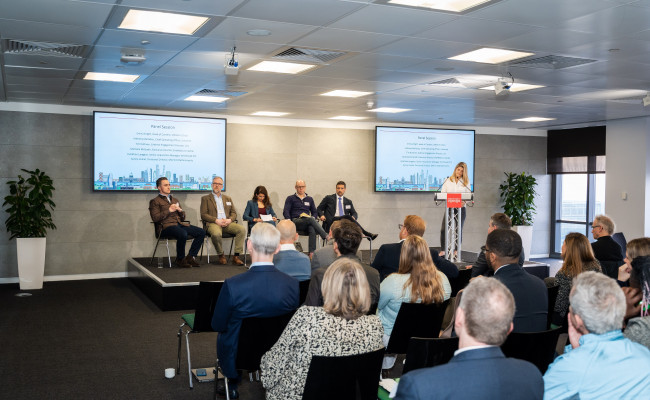


Culture is not just the heart and soul of London’s most beloved spaces and places; it plays an integral role in their ultimate commercial success.
From Canary Wharf to Covent Garden and from Canada Water to Camden, the power of culture, creativity and a vibrant mix of uses can’t be underestimated when it comes to creating resilient city hubs – particularly at a time when people are flocking to places where connectivity and a sense of belonging reign supreme.
Gone are the days when a district could thrive simply by offering even the highest quality commercial offices or residential in isolation. Variety is the spice of life and, for those with patient capital, mixed-use urban centres are fast becoming one of the hottest investment opportunities going.
This was the consensus at last month’s Opportunity London event, Cities For the Future: Mixed Use Urban Centres. It was here, at Level39 in the heart of Canary Wharf, where industry voices from across a number of key sectors including education, student housing, hospitality and entertainment came together to discuss everything from how partnerships and collaborations could be the answer to creating cohesive and futureproofed city hubs to what places and spaces in global metropolises like London look like in a world where everything, including how and where we choose to work, is changing.
Canary Wharf Group’s chief investment officer John Mulqueen kicked off proceedings with an overview of how the developer is tackling the evolving nature of places, spaces and city districts. Canary Wharf 3.0, he said, puts placemaking and a mix of uses at its heart with a continued commitment to public realm and an increased focus on bringing more hotels, serviced apartments, bars and restaurants into the hub. He also highlighted the importance of sectors including life sciences and education within the city region and suggested a potential opportunity to build student housing in the future.
This set the scene for a panel discussion on how strategic development and collaboration will shape the future of our cities, both here on the UK and across the globe. Following on Mulqueen’s overview of Canary Wharf, Michelle McGrath, executive director at Shaftesbury Capital talked about the power of places where people are able to establish an emotional connection. Speaking specifically about Covent Garden she pointed out that the area, like any other, would be nothing without its culture. “How do you create emotionally engaging places?” she asked, before explaining that thriving places with the capacity for ongoing, sustainable growth will, above all else, need to attract people.
“Patient capital is really what's needed to impact the community,” she added. “And we need policies to put that capital to work in London.”
On the subject of sectors working more closely together, student accommodation provider Urbanest’s chief operating officer Anthony Mellalieu and UCL’s external engagement director Tim Ruthven spoke about their own collaboration, citing that long-term partnerships with universities are proving instrumental in helping to transform “dense, populated urban spaces.” It gives developers and investors confidence in an area or site, they added. Invaluable when it comes to attracting backing and capital.
Jonathan Langdon, senior acquisition manager at Whitbread PLC discussed the importance of repurposing space as part of a wider conversation around how human behaviours are shaping the future of our city hubs and Sunny Jouhal, divisional director at Merlin Entertainments - the company behind attractions including LEGOLAND, Madame Tussauds and The London Eye -highlighted how crucial a mix of uses is when it comes to the location of attractions. Proximity to a good selection of hotels, bars and restaurants in particular is paramount, he added. More evidence, if it was needed, that city regions thrive when a number of uses and offerings are woven into and around each other to create a buzz.
This, the panel agreed, is the future of resilient hubs and neighbourhoods within our global cities. Places where culture is knitted into the urban fabric. Places where people flock because they know they can find everything they need in one place. Places where an emotional connection can be established.
The future of our cities and the pockets within them is variety. And, while it might be true that these are the area where patient capital will be required, chances are they will be worth the wait.